A Guide to Raydium Liquidity Pool Profits
Unlock the secrets of the Raydium liquidity pool. This guide explains how to analyze pools, manage risk, and use on-chain data to mirror smart money strategies.

January 2, 2026
Wallet Finder

November 26, 2025
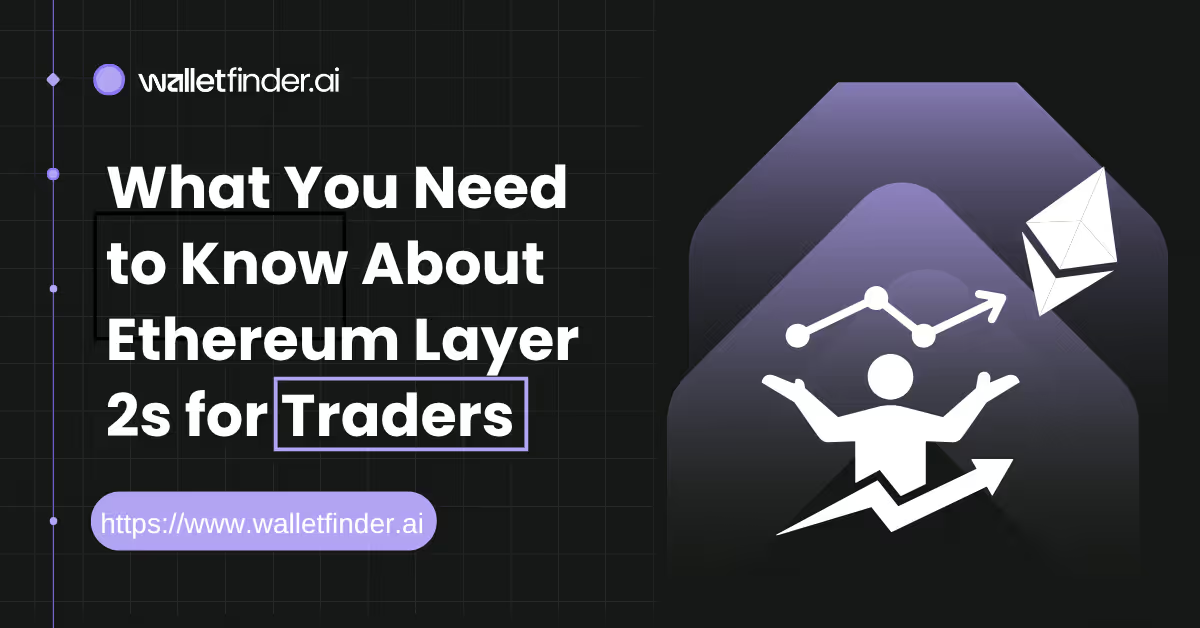
Trading on the Ethereum network can feel like paying a hidden tax. High gas fees and slow transactions make it challenging to move fast or trade small amounts without losing money.
This is where Ethereum Layer 2 networks come in.
It allows traders to skip the network congestion and transaction costs while running transactions off-chain and securing them back into the main Ethereum blockchain.
If you're considering trading often, paying less in fees, and capturing more profit, knowing how Layer 2s work on Ethereum is essential. Wallet Finder.ai shows you the wallets and blockchains currently making money on these cheaper, faster layers so you can follow suit and get ahead.
A Layer 2 can be thought of as a side road running next to the main Ethereum network highway. It carries out transactions off the main chain but posts a record back to Ethereum. This way, it maintains security while easing congestion.
● Lower transaction fees: Many Layer 2s cut gas costs by 10 to 100 times.
● Faster confirmation: Trades settle in seconds instead of minutes.
● Same security: They rely on the main Ethereum blockchain for final proof.
● Optimistic Rollups - These trust transactions by default and check only if someone challenges them. Popular examples are Arbitrum, Optimism, and Base.
● ZK-Rollups - These use zero-knowledge proofs to confirm batches of transactions fast and securely. Examples include zkSync Era, Starknet, and Scroll.
● Validiums / Volitions - They store data off-chain but link to Ethereum for trust. Immutable X and Polygon CDK use this method.
Layer 2 networks work behind the scenes to boost transaction speed and shrink costs without sacrificing the safety traders expect from the Ethereum network.
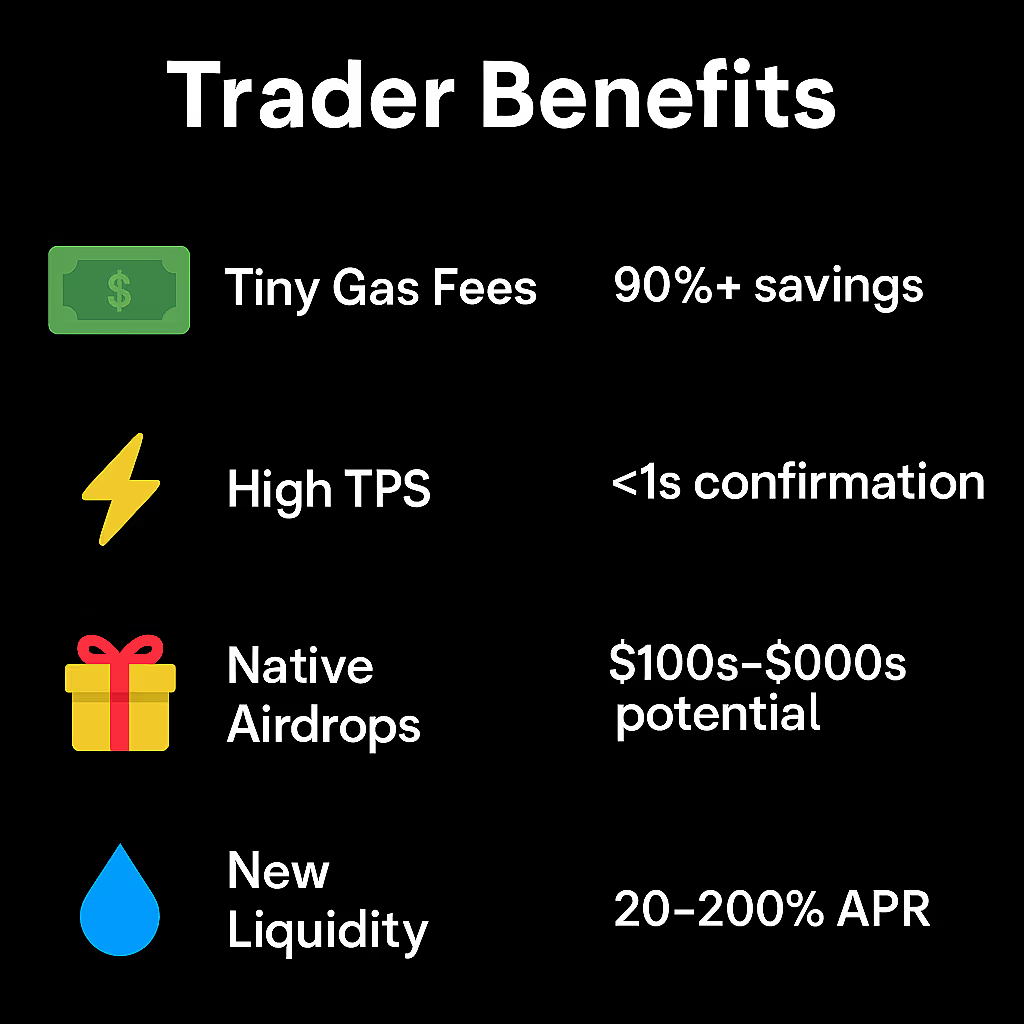
Not every Ethereum Layer 2 works the same for traders. Some have cheaper swaps, while others have bigger pools of money for DeFi. Here’s a quick look at five of the most popular ones for trading:
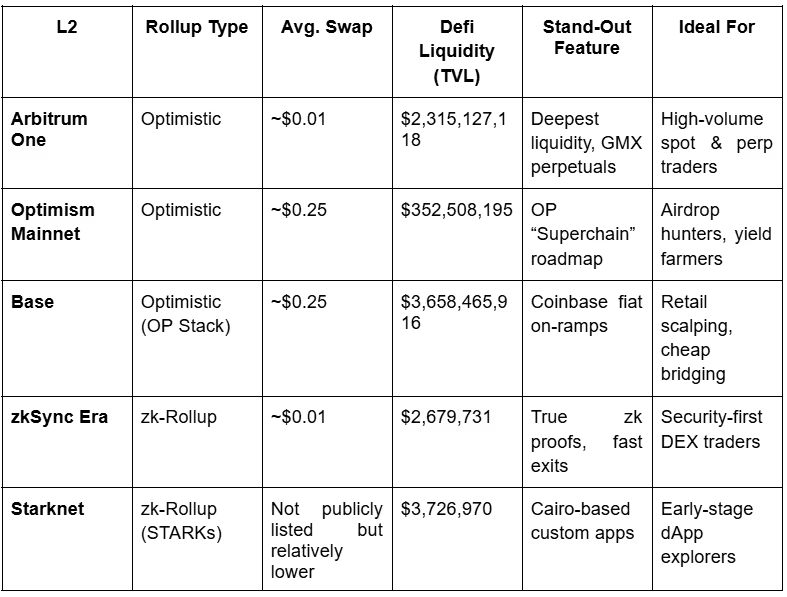
Each of these networks lowers transaction fees and boosts transaction speed compared to the main Ethereum blockchain. Pick the one that matches your trading style, then use WalletFinder.ai to see which wallets profit the most on each Layer 2.
Getting started with Ethereum Layer 2 is super easy. Below are simple steps on moving funds, skipping high transaction fees, and trading faster than the Ethereum Blockchain:
First, open MetaMask and connect to the Layer 2 network you will use. You can do this automatically with Chainlist or by adding the RPC details manually. This connects your wallet to the right blockchain rollups so you can send and receive tokens off-chain.
Then, transfer your cryptocurrencies from Layer 1 to Layer 2 on official bridges and trusted routers like Hop and Synapse. Here, smart contracts will lock down your funds on the Ethereum network and release them on Layer 2.
Always double-check the security of the bridge to avoid any risk.
Once your funds arrive, choose where to trade. Popular decentralized apps include Uniswap v3, SushiXSwap, Aerodrome on Base, and Vertex on Arbitrum One. These run on Layer 2, which guarantees you lower transaction costs and quicker executions than the Ethereum mainnet.
One advantage of Layer 2 networks is that they offer cheaper gas. With such tiny transaction fees, you should be able to keep your slippage settings tight, usually below 0.3%. This allows your trades to closely reflect market price and makes you less exposed to price swings.
At last, use Wallet Finder.ai to monitor the performance of your wallet. Connect your wallet to our platform to calculate profit and loss, gas savings comparisons, as well as to follow profitable wallets in Arbitrum, Base, Optimism, or other Layer 2s. If you're also looking to improve your trading timing, check out our guide on Top 7 Tools for Entry and Exit Signal Alerts to spot profitable opportunities more confidently.
This will give you an idea of where your money is working well.
Once you’re comfortable trading on an Ethereum Layer 2, you could try some advanced tricks to make some real profits. These tricks utilize off-chain transactions, smart contract tricks, and blockchain rollups to be one step ahead of everyone else.
Price differences arise whenever tokens are listed on more than one Layer 2. For instance, the same token may be slightly more expensive on Arbitrum than it is on zkSync Era. Traders can profit from this gap by buying low on one network and selling high on another. The speed of Layer 2 transactions and low fees make it feasible.
Some decentralized applications offer contracts termed perpetuals to assist paying traders in points or extra tokens. Platforms like GMX v2 on Arbitrum One, Hyperliquid, and Level Finance allow users to trade perpetuals and farm.
As Layer 2 cuts gas costs, you can open and close trades more often without losing money on fees. This is something hard to do on Layer 1.
Many new Layer 2 networks launch with big bonuses for liquidity providers. These early programs can pay huge APRs for a short time. Traders jump between networks like Blast or Scroll to catch the best yield. By using WalletFinder.ai, you can track wallets that move fast between these liquidity farms and copy their path.
Some new Layer 2 wallets use smart contract wallets with ERC-4337. This lets a “paymaster” cover your gas fees so you can pay in USDC or even trade gas-free. This trick makes decentralized finance easier for newcomers who hate managing gas in ETH.
Advanced plays like these show how flexible Layer 2 blockchains are. Combine these with WalletFinder.ai to watch how profitable wallets use these same tricks to stay ahead.
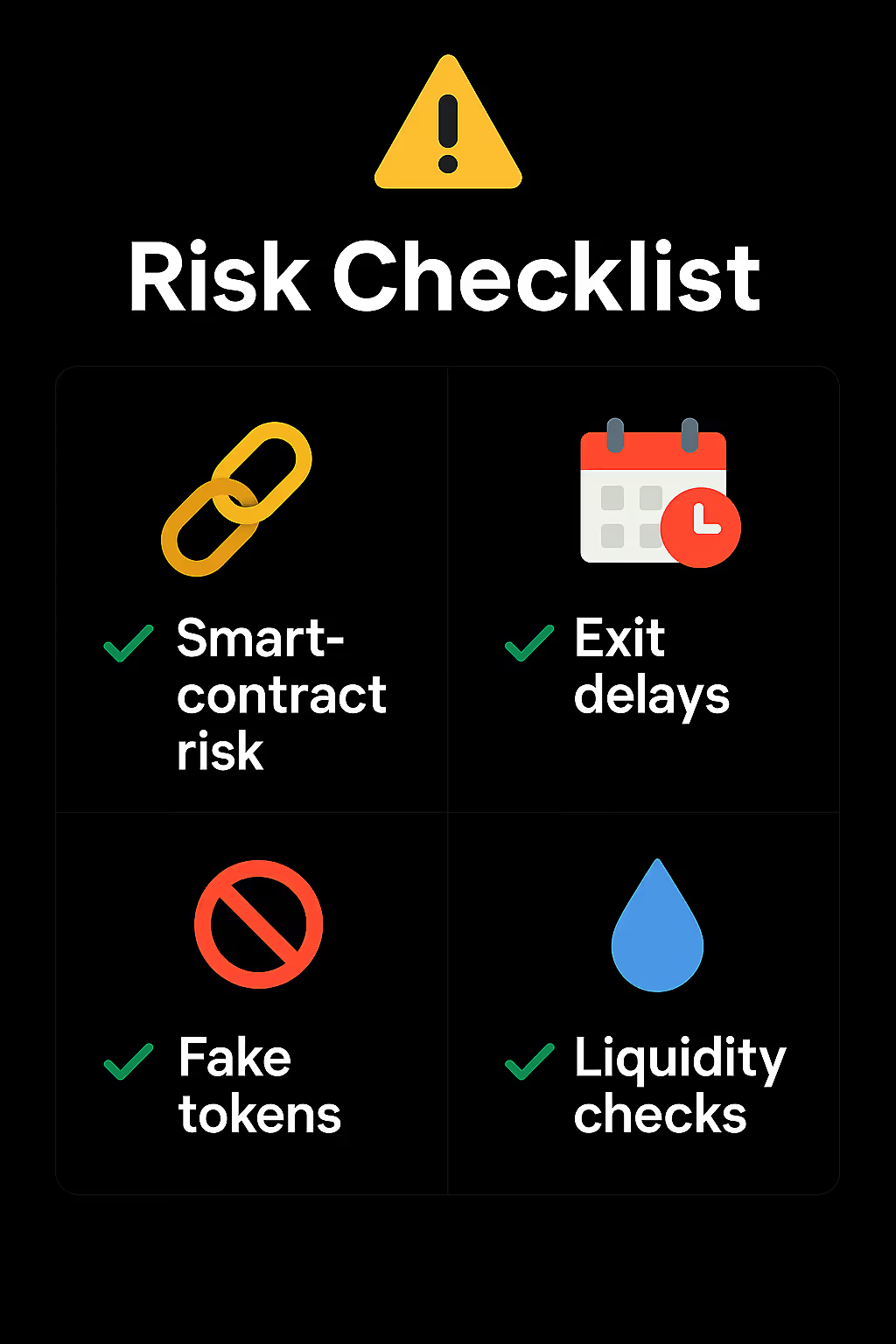
Layer 2 makes trading cheaper and quicker, but it comes with a few risks. Keep these in mind:
1. Bridge Smart-Contract Risk - Always use official or well-audited bridges. Poorly built smart contracts can get hacked, risking your funds.
2. Fraud Proof/Validity Proof Delays - Optimistic rollups like Arbitrum and Optimism may need up to 7 days to settle withdrawals back to the Ethereum mainnet fully. Plan your exits early.
3. Fake Tokens & Rugpulls - Layer 2s can have copycat tokens. Always check token contract addresses on a trusted block explorer before trading.
4. Liquidity Fragmentation - Liquidity can spread across many pools. Double-check the pool’s depth to avoid significant price changes when placing large orders.
Staying cautious protects your profits while enjoying faster, cheaper trades on Ethereum Layer 2.
Trading on an Ethereum Layer 2 is smart.
However, it becomes better when you know which wallets are winning. Wallet Finder.ai gives traders the edge through its insight into actual wallet data across optimistic rollups, zk rollups, and others.
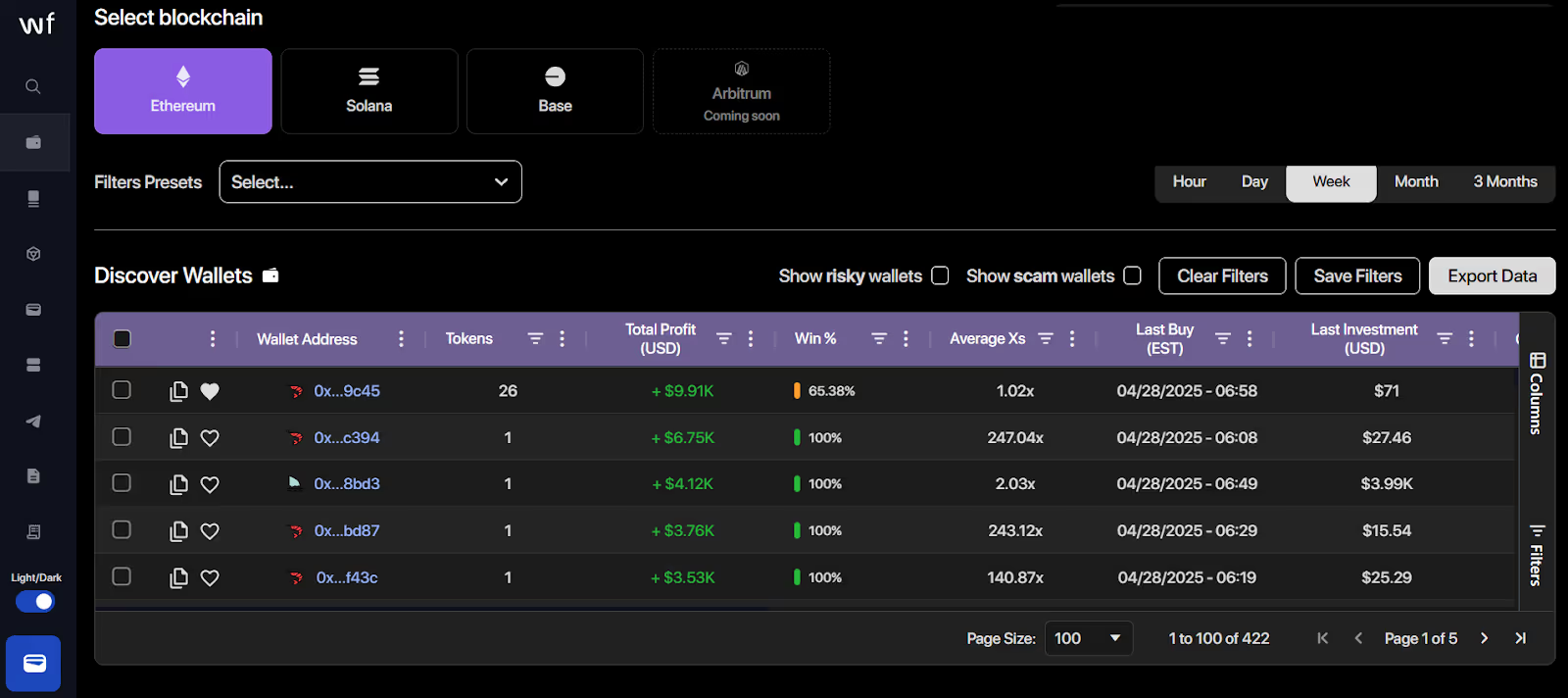
See the daily leaderboard for the wallets with the highest net profit on Layer 2 chains like Arbitrum (launching soon), Base and Ethereum. Here, it becomes easier for traders to follow wallets engaged in off-chain transactions to minimize the transaction fee while keeping high profits.
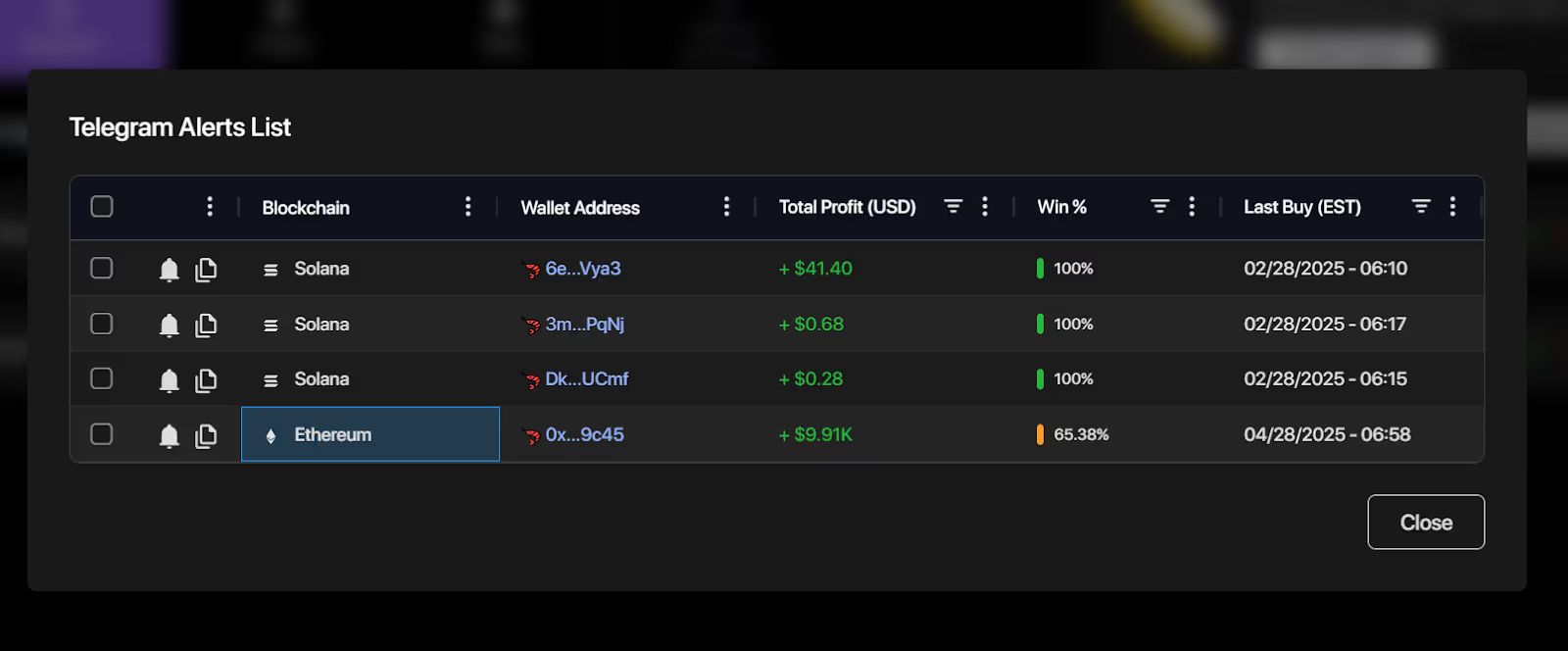
Big wallets often jump to new Layer 2 blockchains when a new decentralized app or yield farm appears. With Wallet Finder.ai, you get instant Telegram alerts when these whales bridge large funds. Early notice means you can catch new liquidity pools or farming rewards before they get crowded.
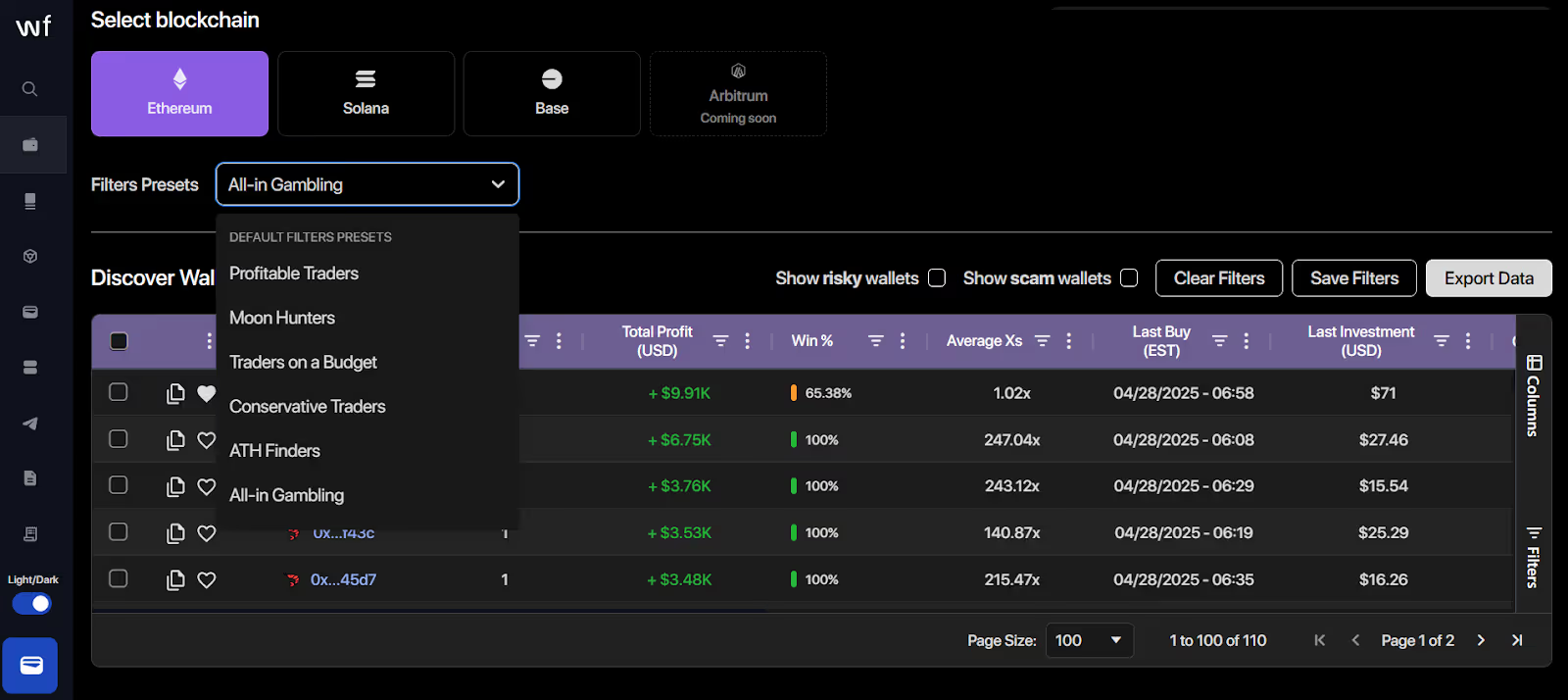
Wallet Finder.ai’s filters make it easy to narrow down wallets by profit stats that matter:
● Profit by the hour, day, week — ideal for short-term plays on fast Layer 2 chains.
● Block number of first investment — see who spotted a token launch early on a zk rollup or optimistic rollup.
● Potential ATH profit — Locate wallets that trade smartly rather than holding for too long. You can combine filters with your Layer 2 of choice to analyze those trades very well under low transaction costs and high transaction speeds.
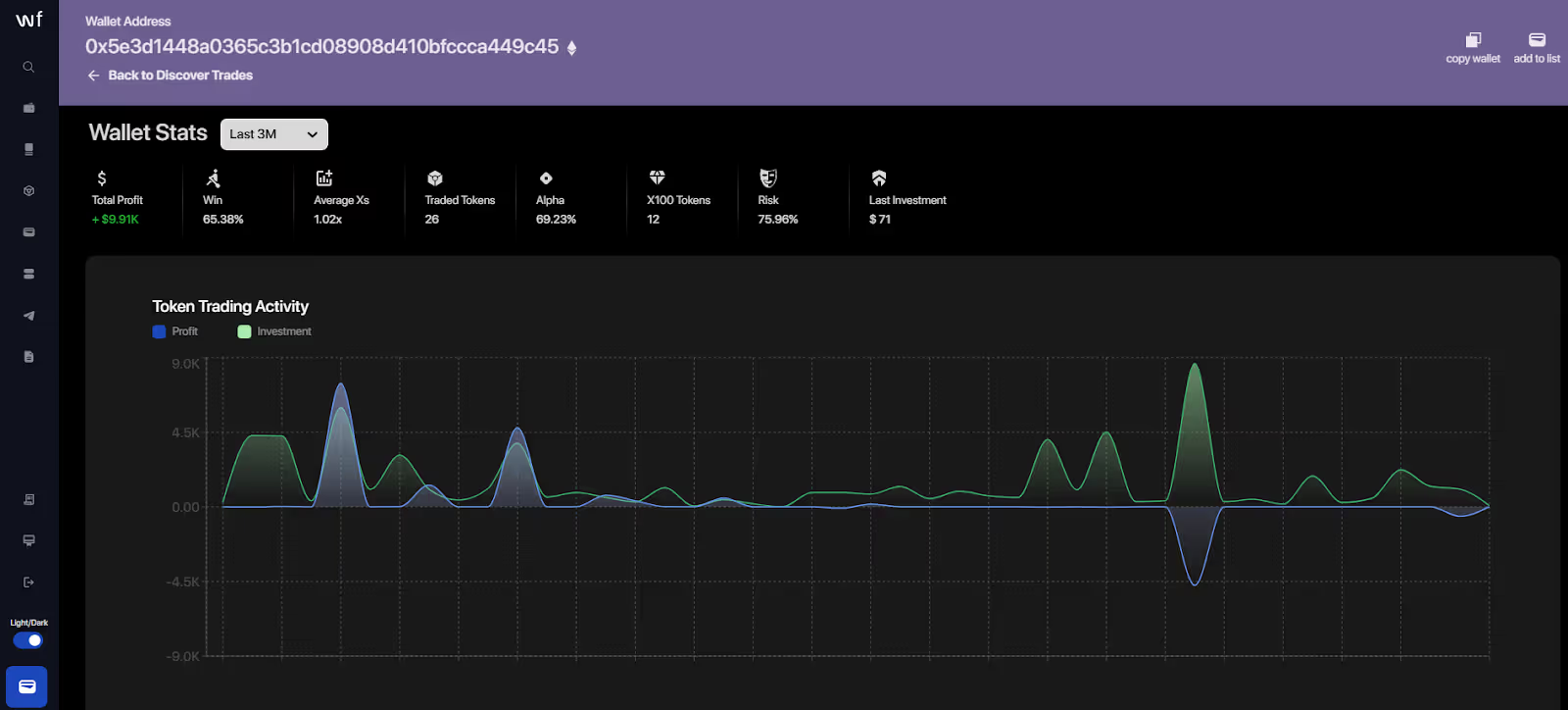
Click on any wallet in the list for an open overview. View the profit investment chart, token history, and trading patterns. It is almost like opening a trader's diary, which helps learn how top traders manage congestion, gas fees, and decentralized applications across chains.

After processing and analyzing, export wallet data as Excel, CSV, or clean PNG format graphs. Many traders rely on these exports for their strategizing or sharing with partners in a decentralized financial system.
Wallet Finder.ai makes trading on Ethereum Layer 2 simple, smart, and more profitable, without getting stuck in high fees on the Ethereum mainnet.
Ethereum Layer 2 networks are no longer a test run. They are where serious traders skip high gas fees and trade faster than ever. Lower transaction costs, faster off-chain transactions, and better tools make Layer 2s the wise choice for anyone using the Ethereum network.
Learn bridging, choose the rollups that suit your liking, whether optimistic rollups similar to the Arbitrum and Base, or zk rollups like the zkSync Era and Starknet. Then allow Wallet Finder.ai to show you, in exact numbers, which wallets are enjoying the most benefit, so you can follow the smart money.
Don’t get stuck paying huge fees on the main Ethereum blockchain. Sign up for Wallet Finder.ai today and start tracking profits across Layer 2s without losing your edge to gas fees.